MO Tested: Cardo Freecom 4x Review

For riders who want premium features but don't need the flexibility of mesh communicators
You can be excused if you assumed that the advent of mesh communicators spelled the end of Bluetooth systems, but the reality is that not every rider needs the features – or expense – of mesh helmet communication systems. Bluetooth is all you need if you ride alone since you’re just connecting to your phone. Additionally, if you only ride with one other rider much of mesh’s flexibility goes unused. A long-range Bluetooth system will do just fine for two riders, and if the group expands a bit, a couple more riders works ok, too. Still, I was surprised when Cardo reached out to see if I wanted to test its updated Bluetooth communicators. The Cardo Freecom 4x has much to offer riders who haven’t yet moved into motorcycle helmet communication and are aware of how they can fit into their riding scenarios.
Cardo Freecom 4x
The Cardo Freecom 4x represents the top of the line Bluetooth communication system offered in the company’s product line. The updates from the previous generation offer a compelling choice for riders who don’t want the expense of a mesh system.
+ Highs
- JBL audio
- Bluetooth 5.2 for higher-quality communication
- Over-the-air firmware updates
– Sighs
- Lacks the flexibility of mesh units
- Four rider limit
- Echo in one unit in intercom mode prior to replacement
Updated Features
Cardo positions the Freecom line as its premium Bluetooth communicators, while people looking at a value-priced option for simple connection to their smartphone and only occasional use of mid-range Bluetooth connection to another rider are better served by the Spirit line. For 2022, the Freecom 4x has some notable improvements over its precursor, the Freecom 4. First, the Bluetooth chip is now a version 5.2 unit. Compared to Bluetooth 4, the new generation transfers data more efficiently while using less power.
Perhaps the most popular change for the Freecom 4x will be the new over-the-air firmware updates. When paired with your iPhone or Android app, firmware updates can take place directly from your phone. No more connecting the unit to your computer via a USB cable! (No, owners of previous generation Cardos, the new phone app will not update firmware on them. Sorry.) While testing the 4x, we installed firmware updates via both iPhone and Android, and while they both worked as advertised, the iOS app took significantly longer. Still this change is a huge update, taking much of the hassle of firmware upgrades out of the task.
When it comes to charging the Freecom 4x, a USB-C cable is now used. Since this connection is on ascendancy, it makes sense to switch from the previous micro-USB connector. When it comes to battery durability, Cardo claims 13 hours of talk time. To test this, I connected my phone to the 4x and played music for 11 hours, and the battery level still reported 25%, which appears to support the claim. The battery now has fast charging, going from 0-100% in just two hours. If you’re on the road, you can get two hours of talk time out of a 20 minute charge – about the time it takes to enjoy a cup of coffee – and as with previous Cardos, you can still use it while charging.
Installation and Use
Installing the Freecom 4x is as easy as any other intercom system. The baseplate mounts to the helmet via a clamp or adhesive and the pigtails for the microphone and speakers need to be threaded inside the helmet. Some helmets may require that a small hole be cut in the cheek/ear liner if you don’t want a couple of inches of wire visible on the exterior of the helmet. Then the rest is as simple as mounting the speakers in the ear cutouts/speaker ports and hiding the wire behind the inner liner. I typically mount the microphone at the very edge of the cheek liner to prevent brushing my lips against it while talking. After the mount is installed, the 4x itself snaps into place. Users with multiple helmets can buy a Freecom 2nd Helmet Kit for either $80 or $120, depending on whether regular or JBL speakers are desired.
The Freecom 4x paired immediately with my iPhone and the Cardo app. As soon as I turned the unit on, I noticed an improvement in the audio quality compared to the speakers and sound processing of the previous generation. The sound out of the 40mm JBL speakers is richer, even with earplugs in. Pairing with another unit is much simpler when both parties have the app installed, taking less than a minute without some of the confusion of button pressing technique that happened in the early days of helmet communicators.
Out on the road, the conversations between riders feels more phone-like than the previous comparatively tinny sound. The volume increases an appropriate amount with speed, and the voice commands worked about 95% of the time while testing. As is true of all helmet communicators I’ve tested, the terrain you are riding in dramatically affects the range at which you can communicate. In flat, wide open, unobstructed areas the far ends of the range varied between two-thirds and three-fourths of a mile, which is in line with Cardo’s claims. However, in the mountains where the road wound around ridges and rock faces, the range dropped down to as little as two corners. Again, this is typical with most Bluetooth helmet communicators.
The Freecom 4x has one great new feature for when the connection between units is lost. The rider receives an audible notification that the connection has failed, and then the unit tries to reconnect for approximately three minutes. This feature eliminates the need to manually reconnect units by pressing a button when the link is broken.
While a pair of Freecom 4xs can connect a group of up to four riders, a few rules need to be followed. Since each unit can only pair to two other units, the communication follows a daisy-chain pattern. The two riders that are paired to one other rider each need to be in the center of the group, with the two singly-paired riders at the two ends. For maximum range in the daisy chain, the first rider needs to be connected to the second, who is also connected to the third. Naturally, the third is connected to both the second and fourth riders. This is the biggest difference between Bluetooth and mesh communicators. In mesh, the connections adapt to the rider order to transmit the signals to the strongest pairings.
One notable issue with one unit was encountered in the test. While it connected to a smartphone without issue and accepted verbal commands, one unit exhibited an echo of the rider’s voice played back after a short delay when connected via intercom to the other unit. This did not affect the audio received by the other unit, just the one that was transmitting. When we reached out to Cardo about the issue, it was diagnosed as a mounting kit problem, and a second helmet kit was sent to us. Upon swapping the mount and the microphone with the new ones, the echo disappeared.
The Roundup
Our time with the Cardo Freecom 4x duo illustrated the improvements in the units over the previous generation. The audio was significantly clearer when in intercom mode, and the relationship that Cardo has with JBL is clearly responsible for this change. The range is what we would expect from a Bluetooth system. The voice control works better than before, and it was already pretty effective. Finally, the audio interface has been refined, most notably in the shutdown routine where the 4x informs the rider the battery level. This will notify riders if they will need to charge the unit before their next ride. Although we did have an echo problem with one unit, that was quickly resolved by replacing the mount and microphone.
Shop for the Cardo Freedom 4x here
I would recommend the Cardo Freecom 4x to a rider who appreciates premium sound when they play music or talk to others. However, the four unit limitation and the daisy chaining requirement for the Bluetooth intercom is something that needs to be considered. The Freecom 4x retails for $270 for a single unit, and duo sets bump the cost to $500. At the time of publication, in the current state of Cardo’s product line, the Freecom 4x represents a price savings and offers over-the-air firmware updates when compared to Cardo’s Packtalk mesh communicators. Riders who don’t need the additional flexibility offered by mesh communicators will be quite happy with the Freecom 4x.
Motorcycle Helmet Communicators FAQ
How do motorcycle helmet communications work?
Motorcycle helmet communicators work via Bluetooth and, in some models, a proprietary mesh technology. You pair your communicator to your phone in a similar way to how you pair to any Bluetooth device, and the result is the ability to listen to music or take calls or hear turn-by-turn directions from your phone. As far as helmet-to-helmet communication is concerned, the pairing can take place through a smartphone app, but the result is that you can talk to other riders over a distance of over a half-mile in ideal conditions. The new mesh technology typically makes pairing between communicators of the same brand much easier, clearer, and over a longer distance.
Is mesh better than Bluetooth?
The advantages of mesh over Bluetooth are: more riders can be connected simultaneously, the connection can travel further, the audio quality is higher, and the network between multiple bikes is more stable and is self-healing. With Bluetooth, the connections between riders were more of a chain from helmet to helmet in a particular order. If one rider broke the chain, the connection to several others could be lost. With mesh, the connections are not linear and follow the connection with the strongest signal, which can be used to transfer the conversation to other riders in the mesh network.
Can you listen to music on a motorcycle?
Yes, while some states may have regulations concerning earbuds or earplugs, there are no regulations that we know of preventing riders from listening to music from helmet speakers. Bluetooth technology has made it much more convenient to listen to music while you ride, and all of the communication systems on this page allow you to do so in addition to their bike-to-bike capabilities.
Additional Resources:
Sena 20S Motorcycle Bluetooth Communication System Review
MO Tested: Sena 20S EVO Motorcycle Bluetooth Communication System Review
MO Tested: Cardo Systems PackTalk Bold
MO Tested: Cardo 45mm Audio Set Review
We are committed to finding, researching, and recommending the best products. We earn commissions from purchases you make using the retail links in our product reviews. Learn more about how this works.
Become a Motorcycle.com insider. Get the latest motorcycle news first by subscribing to our newsletter here.

Like most of the best happenings in his life, Evans stumbled into his motojournalism career. While on his way to a planned life in academia, he applied for a job at a motorcycle magazine, thinking he’d get the opportunity to write some freelance articles. Instead, he was offered a full-time job in which he discovered he could actually get paid to ride other people’s motorcycles – and he’s never looked back. Over the 25 years he’s been in the motorcycle industry, Evans has written two books, 101 Sportbike Performance Projects and How to Modify Your Metric Cruiser, and has ridden just about every production motorcycle manufactured. Evans has a deep love of motorcycles and believes they are a force for good in the world.
More by Evans Brasfield



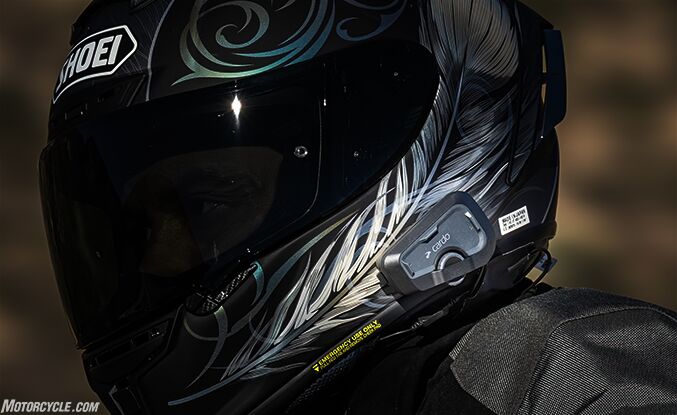


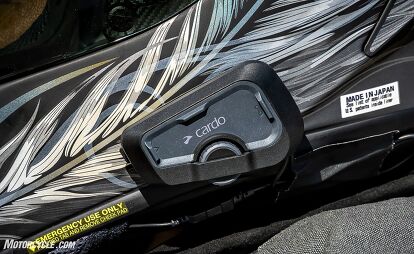













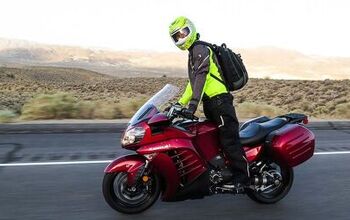
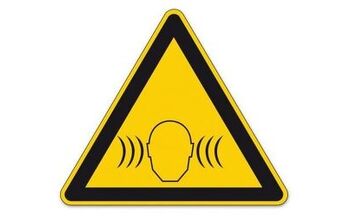
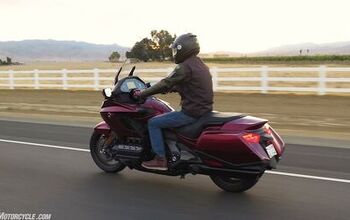




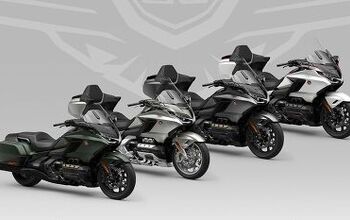










Comments
Join the conversation